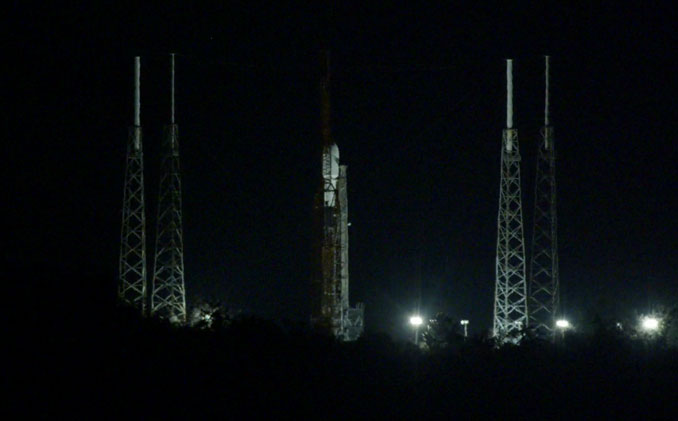Update 12:01 a.m. EDT:
SpaceX successfully launched its Falcon 9 rocket at 11:38 p.m. EDT (0338 UTC) from SLC-40 at Cape Canaveral Space Force Station. The first stage booster, B1058, landed back on the drone ship, A Shortfall of Gravitas, about eight-and-a-half minutes into flight, becoming the first booster to fly for a 17th time. SpaceX corrected its website to state the booster on this mission was 1058 not 1060 as it had earlier said.
Update 10:19 p.m. EDT:
SpaceX adjusted the launch time of the Starlink 6-17 mission. The new T-0 liftoff time is now at 11:38 p.m. EDT (0338 UTC). The next available liftoff time would be at 12:28 a.m. EDT (0428 UTC) on Sept. 20.
Original story:
SpaceX will push the boundaries of booster reusability Tuesday night with the scheduled launch of a Falcon 9 using a first stage rocket making its 17th flight. Liftoff from pad 40 at Cape Canaveral with 22 satellites for the Starlink internet network is scheduled for 10:47 p.m. EDT (0247 UTC).
Booster serial number 1058 will be making a record-breaking 17th flight for the Starlink 6-17 mission. Earlier this year SpaceX certified its fleet of Falcon 9 first-stage boosters for up to 20 flights.

The booster first flew in June 2020 carrying the GPS 3-3 satellite for the U.S. Space Force and went on to fly the Turksat 5A, Transporter-2, Intelsat G-33/G-34 and Transporter-6 mission, plus 11 Starlink delivery flights.
Space Force meteorologists are keeping a close watch as a weather front stalls just south of Florida’s space coast and a storm is brewing off shore in the Atlantic. In a forecast issued on Monday, they predicted a 60 percent chance of acceptable weather for launch. The main concern being a violation of the cumulus cloud rule. With the development of the costal storm, conditions deteriorate if the launch slips a day, with only a 30 percent chance of acceptable weather.
It will be the 20th launch of the so-called V2 mini Starlink satellites which are larger and have four times the bandwidth of the previous versions. The full-sized V2 Starlink satellites are due to be launched by SpaceX’s fully-reusable Starship vehicle, but the delayed debut of Starship led the company to create a condensed version of the satellites so they could be launched on Falcon 9.
